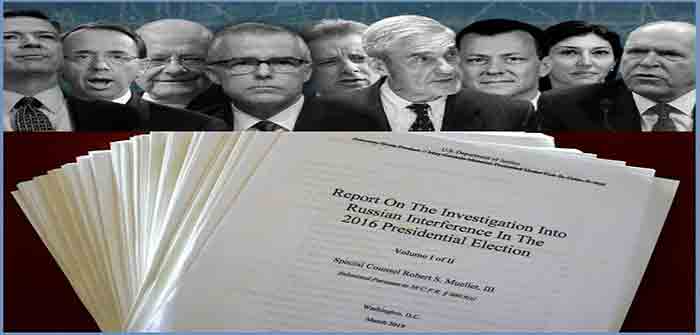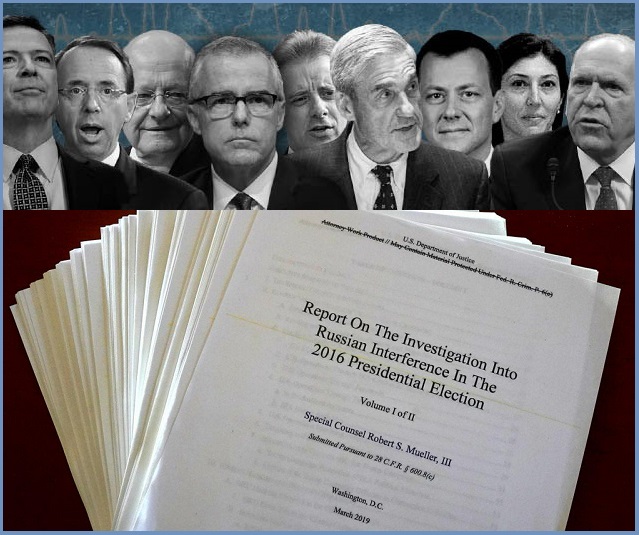
by Sundance at The Conservative Treehouse
In Part One we explained who, what, when and why around the modern construct of the modern DC system {Go Deep}. Now we move into Part Two, the targeting of President Trump and the specific trail of documented evidence that exists behind the targeting.
It is critical to understand that foundationally our corrupt political system is built upon a network of surveillance. It is through monitoring information and people, together with intercepting risk, that operations can continue to maintain a corrupt administrative state; what some might call the Deep State.
Within the system information is key, and the actions taken by DOJ and FBI officials are an outcome of this information. As Edward Snowden explained, the surveillance state is critical to power retention. President Trump carried documents that outlined how this process took place as it pertained to his entry into politics, thus the raid to retrieve them.
 There is a common misconception about why the FBI and intelligence apparatus began investigating the political campaign of Donald Trump.
There is a common misconception about why the FBI and intelligence apparatus began investigating the political campaign of Donald Trump.
During the timeframe of December 2015 through April 2016 the NSA database was being exploited by contractors within the intelligence community, specifically within the FBI, doing unauthorized searches.
On March 9, 2016, oversight personnel doing a review of FBI system access were alerted to thousands of unauthorized FBI search queries of specific U.S. persons within the NSA database.
NSA Director Mike Rogers was made aware.
Subsequently NSA Director Rogers initiated a full compliance review of the system to identify who was doing the searches; & what searches were being conducted.
On April 18, 2016, following the preliminary audit results, Director Rogers shut down all FBI contractor access to the database after he learned FISA-702 “about”(17) and “to/from”(16) search queries were being done without authorization.
Thus begins the first discovery of a much bigger background story.
When you compile the timeline with the people involved; and the specific wording of the resulting NSA review, which was then delivered to the FISA court; and then you overlay the activity that was taking place in the 2016 political primary; what we discover is a process where the metadata collected by the NSA was being searched for political opposition research and surveillance.
Exposing this method of surveillance is where the Trump phrase, “they are not after me – they are after you, and I’m just in the way,” takes on a massive amount of clarity. Because, in the final analysis, what Trump experienced as a target of this system actually pertains to anyone, not just him.
Tens-of-thousands of unauthorized and unlawful searches were identified by the 2017 FISA court as likely extending much further than the compliance review period: “while the government reports it is unable to provide a reliable estimate of the non-compliant queries since 2012, there is no apparent reason to believe the November 2015 [to] April 2016 period coincided with an unusually high error rate”.
In short, during the Obama administration access to the NSA database was continually used to conduct surveillance. This is the critical point that leads to understanding the origin of “Spygate”, as it unfolded in the Spring and Summer of 2016.
It was the discovery of the database exploitation and the removal of access as a surveillance tool that seemed to create the initial problem for the FBI political unit in Washington, DC. Here’s how we can tell.
 In December 2015 there were 17 GOP candidates, all needing opposition research.
In December 2015 there were 17 GOP candidates, all needing opposition research.
However, when Donald Trump won New Hampshire, Nevada and South Carolina the field was significantly whittled. Trump, Cruz, Rubio, Kasich and Carson remained.
On Super Tuesday, March 2, 2016, Donald Trump won seven states (VT, AR, VA, GA, AL, TN, MA) it was then clear that Trump was the GOP frontrunner with momentum to become the presumptive nominee.
On March 5th, 2016, DonaldTrump won Kentucky and Louisiana; and on March 8th Trump won Michigan, Mississippi and Hawaii.
The next day, March 9, 2016, is when NSA security alerts warned internal oversight personnel that something sketchy was going on. This timing is not coincidental.
As FISA Judge Rosemary Collyer later wrote in her report…
Continue Reading